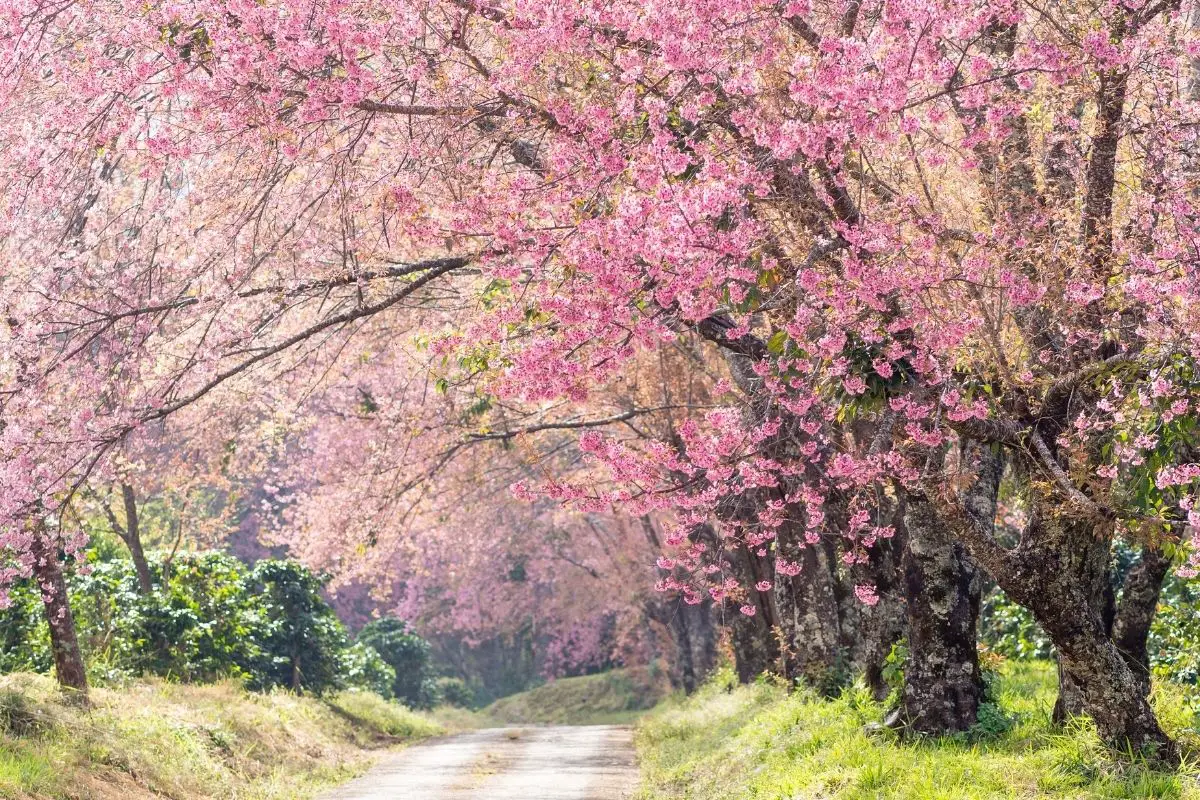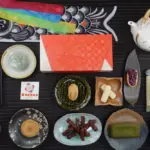You may already be aware of the fact that Cherry blossom trees are a significant part of Japanese culture and these trees can be found across the country.
They are included in many pieces of art that derive from Japan and are referred to as ‘Sakura’ in Japanese.

The best thing about cherry blossoms is that they are edible. Cherry blossom is classified as a floral herb in Japanese culture and throughout the word and is used as an ingredient in numerous meals, teas and dessert delicacies.
Cherry blossom is also frequently used in herbal remedies as the attractive floral scent makes them the perfect additive.
Cherry blossoms can be consumed in a variety of ways that are similar to how you would consume another variety of herb in your drink or food (see also ‘Does Ramune Have Caffeine?‘).
Some people will also fragrance their bath water with cherry blossoms in order to promote healthy skin and sensory renewal (see also, ‘How to Use Incense Sticks‘).
The most common way that you can consume ‘Sakura’ is in tea, in cookies, in mocha and in a ‘Sakura-an’ (a paste that amalgamates white bean and cherry blossom).
During the Hanami festival in Japan, the cherry blossom is celebrated. Family and friends will gather and create feasts known as hanami feasts.
These usually feature candies and feature food that accompanies sushi dishes that will typically include Sakura as a key ingredient.
What Are The Nutritional Benefits Of Cherry Blossom?
Sakura cherry blossoms are great antioxidants. Similarly to green tea, these antioxidants help to reverse any cell damage and encourage growth and repair.
In turn, these antioxidants also have helpful anti-aging qualities and have been proven to boost immunity.
In addition to this, cherry blossom leaves are high in fatty acids and when converted into a paste, these leaves can effectively moisturize the skin that helps to lighten any scarring.
What Is Sakura Cherry Blossom Wagyu?
If you’ve ever heard of Sakura Wagyu Farms (see also ‘Can You Eat Wagyu Raw?‘), then you will be wondering if the finest cuts of wagyu steak are literally infused with cherry blossom.
However, this is just a name for the farm itself which pays homage to the Japanese heritage of wagyu beef (see also ‘Why Is Wagyu Expensive?‘).
Cherry Blossom Liquor
Although cocktail culture is typically regarded to have originated in the United States, the trend quickly spread to Japan and during the cherry blossom season (see also, ‘Best Time to Visit Japan for Cherry Blossoms‘), you will be able to witness numerous Japanese cocktail connoisseurs grinding dried sakura leaves and amalgamating them with Japanese Hibiki whiskey.
These leaves are also often used as a beautiful garnish.
Are All Cherry Blossoms Edible?

Whilst the vast majority of cherry blossoms are edible, there are some that are toxic for human consumption. The most poisonous cherry tree derives from the Prunus Serrulata.
In humans, these leaves and flowers can cause stomach problems whilst the result of consumption can be far more deadly for dogs.
Ideally, you should purchase your cherry blossom from a known and reputable food distributor in order to guarantee that you are not consuming the toxic variety.
Why Are Cherry Blossoms Significant In Japanese Culture?
Cherry blossoms represent renewal and this celebration can be equated to the spring solstice festivals in Western countries.
The cherry blossom (see also ‘What Do Cherry Blossoms Symbolize?‘) is only in bloom for a short period of time during spring, and they quickly die post pollination.
Therefore, there are numerous festivals hosted to honor the spring awakening and to celebrate the rarity of the cherry blossom tree (see also ‘How Big Do Weeping Cherry Trees Get?‘).
A deeper meaning of the festivities that surround the cherry blossom tree is that they symbolize an appreciation for life due to their short life span.
Therefore, the cherry blossom encourages people to show their appreciation for the smaller things in life and to appreciate how short life truly is.
This inherently builds a stronger appreciation for family and friends and the festivities that include cherry blossom are a physical representation of this notion of a deeper appreciation for life.
Conclusion
To conclude, cherry blossoms are an excellent addition to a wide variety of food, teas, desserts and skin products. Cherry blossoms are packed with antioxidants that promote rejuvenation, renewal and vitality.
They also have a pleasantly sweet aroma that adds the perfect scent to any environment.
If you are fortunate enough to visit Japan during the spring, you should definitely make sure that you engage in one of the country’s numerous Sakura-based festivities and sample all the wonders that cherry blossom has to offer (see also ‘Do Cherry Blossom Trees Grow Cherries?‘).
As always, exercise caution when consuming any cherry blossom that hasn’t been brought from a reputable source as these can be toxic and cause stomach problems.
Using cherry blossom in bath water is the perfect way to replenish your senses whilst promoting healthy and youthful skin.
It’s properties of renewal are evident through the antioxidants that it contains, and you should certainly make cherry blossom a part of your diet in order to ensure that you are consuming a healthy level of antioxidants and boosting your immune system accordingly.
If you are a dog owner, you should exercise caution if your dog attempts to consume any cherry blossom as some varieties of blossom can be highly toxic to animals.
However, the benefits of consuming cherry blossoms far outweigh any risks that may be involved, and Japanese culture has championed the use of cherry blossom in its infamous sushi dishes and luxurious cocktails for many years for a good reason.
If you are looking to add both fragrance and flavor to your food then you should definitely consider adding cherry blossom to your favorite Japanese dishes or fermenting it in tea in order to promote vitality, renewal and relaxation.









